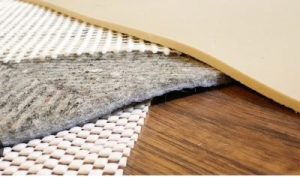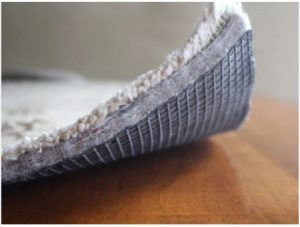As an expert in the field, I’ve seen far too many cases of damage caused by sliding furniture on the carpet. It might seem like an easy way to rearrange a room, but let me tell you, it’s a recipe for disaster.
Here are eight reasons why sliding furniture on a carpet can ruin it, along with solutions to avoid these problems.
1. Fibre Friction
When you slide heavy furniture across carpet, you’re essentially creating a mini-battle between the furniture and the carpet fibres.
As the furniture moves, it generates friction, causing the carpet fibres to bend and break. Over time, this can lead to unsightly wear and tear.
Solution: Lift, don’t slide!
Instead of sliding furniture off the ground, lift it off the ground before moving it. This reduces friction and protects your carpet from damage.
If lifting isn’t feasible, consider using furniture sliders underneath each leg to reduce friction.

sliding furniture on carpet
2. Compression Damage
Carpet isn’t invincible. When you slide heavy furniture across it, you’re subjecting the carpet to intense pressure. This pressure can cause the carpet fibres to compress and flatten, resulting in permanent indentations.
Solution: Rotate regularly!
To prevent compression damage, make it a habit to rotate your furniture regularly. This ensures that the pressure is distributed evenly across different areas of the carpet, minimizing the risk of permanent indentations.
3. Colour Fading
Believe it or not, sliding furniture on carpet can actually cause colour o fade. How? Well, as the furniture moves, it creates friction that generates heat. This heat can accelerate the fading process, leaving your carpet looking dull and discoloured.
Solution: Protect with pads!
Before sliding furniture, place protective pads underneath each leg. These pads act as a barrier, reducing friction and preventing heat buildup. Additionally, consider investing in UV-resistant carpet to minimise colour fading over time.
4. Underlying Damage
Perhaps the most insidious consequence of sliding furniture on carpet is the potential for underlying damage.
As the furniture moves, it can pull and stretch the carpet fibres, causing structural damage that isn’t immediately visible…
Solution: Inspect regularly!
To detect underlying damage early, make it a habit to inspect your carpet regularly. Look for signs of stretching, puckering, or loosening around furniture legs.
If you notice any issues, address them promptly to prevent further damage.

sliding furniture on carpet
5. Stubborn Stains
Sliding furniture across carpet can lead to stubborn stains caused by dirt, spills, or even the friction itself. These stains can be difficult to remove, especially if they’ve been ground into the carpet fibers over time.
Solution: Clean with care!
Regularly clean your carpet using a gentle carpet cleaner and a soft-bristled brush. For tough stains, consider using a stain remover specifically formulated for carpets.
Remember to blot rather than rub to avoid spreading the stain further.
6. Increased Dust And Allergens
Every time you slide furniture on carpet, you’re stirring up dust and allergens trapped within the carpet fibres.
This can exacerbate allergy symptoms and diminish indoor air quality.
Solution: Vacuum frequently!
Combat dust and allergens by vacuuming your carpet frequently, especially in high-traffic areas and under furniture.
Use a vacuum cleaner equipped with a HEPA filter to capture even the smallest particles and improve air quality.
7. Weakening Of Carpet Backing
The force exerted on the carpet backing when sliding furniture can weaken its integrity over time.
This can lead to delamination, where the carpet layers separate, causing bubbles or wrinkles.
Solution: Reinforce with rug grippers!
Prevent delamination and preserve your carpet’s backing by using rug grippers or carpet tape underneath large area rugs or carpet remnants.
These adhesives provide extra support and stability, reducing the risk of damage from furniture movement.
8. Risk Of Accidents And Injuries
Sliding heavy furniture on carpet poses a significant risk of accidents and injuries, both to yourself and others. Furniture can unexpectedly tip or slide out of control, leading to falls or crushed toes.
Solution: Enlist help and use proper techniques!
When moving heavy furniture, enlist the help of others to distribute the weight evenly and reduce the risk of accidents.
Additionally, use proper lifting techniques, such as bending at the knees and keeping your back straight, to avoid strain and injury.
(FAQs)
Q1: Is it really that harmful to slide furniture on carpet?
A: Yes, sliding furniture on carpet can cause various forms of damage over time. It can lead to fibre friction, compression damage, colour fading, stubborn stains, weakened carpet backing, and even accidents or injuries.
Q2: Can I use furniture sliders to prevent damage to my carpet?
Furniture sliders can help reduce friction and protect your carpet, but they’re not a foolproof solution. It’s still best to lift heavy furniture whenever possible to minimise wear and tear on the carpet fibres.
Q3: How often should I rotate my furniture to prevent compression damage?
A: It’s a good idea to rotate your furniture every few months to distribute the weight evenly across different areas of the carpet. This helps prevent permanent indentations and prolongs the life of your carpet.
Q4: What’s the best way to clean stubborn stains caused by sliding furniture?
A: For stubborn stains, use a gentle carpet cleaner and a soft-bristled brush to lift the stain from the carpet fibers. Avoid rubbing the stain, as this can cause it to spread further. Blotting gently is the key to effective stain removal.
Q5: How can I prevent accidents and injuries while moving heavy furniture?
A: Enlist the help of others when moving heavy furniture to distribute the weight evenly and reduce the risk of accidents. Additionally, use proper lifting techniques, such as bending at the knees and keeping your back straight, to avoid strain and injury.
Q6: Are there any long-term consequences to sliding furniture on carpet?
Yes, sliding furniture on the carpet can have long-term consequences, such as weakening the carpet backing, which can lead to delamination and structural damage over time. It’s essential to take preventive measures to avoid these issues.
No Comments
Be the first to start a conversation